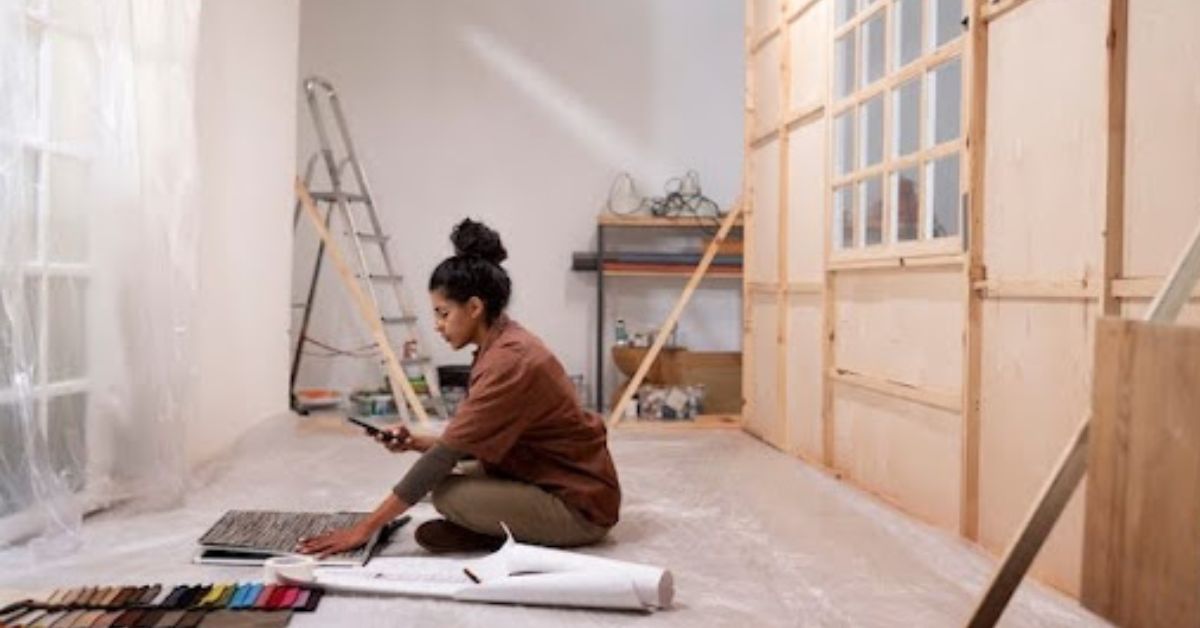Your basement might be the most overlooked area of your home, but it holds incredible potential. Whether it’s currently a dark, unused space or an area that’s just not functional, with the right approach, you can transform it into a beautiful, functional part of your home.
From extra bedrooms to cozy family rooms, home offices, or even entertainment spaces, the options are endless. If you’ve been thinking about giving your basement a makeover, here’s a step-by-step guide to help you get started.
1. Assess Your Basement’s Condition
The first step in transforming your basement is assessing its current condition. Start by checking the walls and floors for any issues. Look for cracks, leaks, or mold. A basement that has moisture problems needs to be addressed before any renovations can begin. You’ll want to ensure that your space is structurally sound and dry.
If there are any moisture issues, consider installing a dehumidifier or waterproofing the walls. If the ceiling is low, think about how you can improve the vertical space, possibly with low-profile lighting or drop ceilings that maximize the height. Once you’ve addressed any structural or moisture concerns, you’ll be ready to move forward with your transformation.
2. Create a Clear Vision
Before diving into the design, take time to think about how you’ll use the space. Will your basement be a guest suite? A home theater? A playroom for the kids? Or maybe you need an office to work from home?
Perhaps you’re looking for your own safe space—a quiet retreat where you can unwind, or a more functional workspace that offers peace of mind.Creating a vision that aligns with your needs is essential. For instance, if you want a space that can help improve concentration and focus, a quiet, well-lit office with comfortable seating and shelving for organization might be the perfect setup. On the other hand, if relaxation is the goal, you might prefer a lounge area or home theater with plush furniture and soft lighting.
Basement as Your Home Office
If you’re setting up an office for remote work, especially if you’re someone who experiences anxiety, think about how to design it to promote comfort and reduce stress. Consider incorporating calming colors, soft lighting, and noise-canceling elements. The right design can also help you manage anxiety while working from home. There are many jobs for people with anxiety that allow for flexibility and remote work, and having a peaceful, well-organized space can be crucial in supporting your mental well-being.
Whether it’s a cozy sanctuary for relaxation or a functional, stress-free workspace, the key is to create a space that supports your needs and promotes your peace of mind.
3. Plan Your Layout
Now that you have a vision, it’s time to plan the layout. Whether you’re going for an open floor plan or creating distinct zones for different activities, the key is maximizing the available space. Use furniture arrangement to create flow and function.
For example, a basement designed for entertainment might include a big sectional sofa, a pool table, and a wet bar—all arranged for easy conversation and movement. On the other hand, if you’re setting up a quiet space, like an office or study area, choose furniture that encourages focus and productivity, with plenty of shelving or cabinets for organization.
Make sure to consider doorways, windows, and any obstacles in the space. A well-thought-out layout can make a basement feel bigger and more open, even if it’s a smaller area.
4. Choose the Right Flooring
Basement floors often suffer from moisture problems, so it’s important to choose a flooring option that’s durable, easy to clean, and moisture-resistant. Here are some great flooring choices for basements:
- Vinyl Flooring: This is a popular choice because it’s waterproof, affordable, and available in a variety of styles. Whether you want the look of hardwood, tile, or stone, vinyl can give you the aesthetic you’re after while standing up to the damp conditions of a basement.
- Tile Flooring: Ceramic and porcelain tiles are another excellent choice. They’re moisture-resistant and easy to clean, making them perfect for basements. Plus, they can add a sleek, modern look to your space.
- Carpet: If you want a cozy, comfortable feel, carpet is a great option. Just make sure to choose a basement-friendly carpet, preferably one designed to resist moisture and mold.
- Concrete: Some homeowners prefer to leave the concrete floors exposed for a more industrial look. Concrete is easy to maintain and can be sealed to prevent moisture problems.
5. Lighting Matters
One of the biggest challenges basements face is a lack of natural light. That’s why lighting is crucial to creating an inviting space. A well-lit basement feels more open, airy, and comfortable. Here are some tips for lighting your basement:
- Recessed Lighting: These ceiling lights can provide uniform light throughout the space without taking up too much headroom. If your basement has low ceilings, recessed lighting is a great option.
- Floor Lamps: Floor lamps can provide ambient lighting while also serving as decorative elements. Place them near seating areas or in corners to brighten up the room.
- Accent Lighting: Use accent lighting to highlight specific areas, like a wall of artwork or a beautiful piece of furniture. LED strip lights, pendant lights, or small spotlights can add a touch of style.
- Natural Light: If possible, add egress windows to allow more natural light in. Not only will this make the space feel less like a basement, but it will also improve airflow and give the room a fresh, airy feel.
6. Add Storage Solutions
When transforming your basement, it’s important to incorporate storage options that fit the design and function of the space. A basement can easily become cluttered if there’s no place to put things. Consider these smart storage solutions:
- Built-In Shelving: Shelving along the walls is a great way to store books, decor, and other items while keeping the space organized.
- Storage Cabinets: If you plan to use the basement as a living room or family area, add cabinets to keep things tidy and out of sight.
- Under-Stairs Storage: The area under the stairs is often wasted space, but it can be turned into functional storage with custom drawers or shelving.
- Closets: If you’re adding a bedroom or office, custom closets can be built to keep your belongings neatly organized.
7. Invest in Quality Furniture
Choosing the right furniture is essential for making your basement both stylish and functional. Whether you’re adding a sectional sofa, a comfortable chair, or a coffee table, make sure the pieces you choose match the space’s purpose and overall design.
If your basement will serve as a home office, invest in a good desk, an ergonomic chair, and plenty of storage to keep things organized. If it’s a family room, go for aesthetic couches and accent chairs that encourage relaxation. Look for furniture that fits your space well—don’t overcrowd the room, and try to create an inviting, comfortable atmosphere.
8. Include a Bathroom or Wet Bar
Depending on how you plan to use your basement, adding a bathroom or wet bar can make the space more functional. For a guest suite or entertainment space, a bathroom is a practical addition. A wet bar is perfect for anyone who loves to host and entertain.
Adding a full or half bathroom can significantly improve the utility of your basement, making it feel more like a true living space rather than a utility area. A wet bar, on the other hand, can give your basement a stylish, fun vibe, perfect for hosting parties or enjoying a quiet evening with a drink.
9. Hire a Professional Contractor
Transforming your basement into a livable, functional space requires expertise. If you’re in Loveland, CO, for example, you can count on the Best basement finishing contractor loveland co to help turn your vision into reality. Professional contractors can handle all the technical details, from electrical and plumbing work to insulation and drywall. They can ensure that everything is done safely and up to code.
Hiring a skilled contractor takes the stress out of the project and ensures you get the best results. Plus, they can often provide creative ideas that you might not have considered. If you are looking for someone similar near you, you can consider searching for ‘Basement Contractor Near Me‘ or other similar terms to locate a professional contractor.
10. Finish with Personal Touches
Once your basement is fully renovated, it’s time to add those finishing touches that make the space feel like your own. Personalize the room with artwork, throw pillows, rugs, and plants. These small details can go a long way in making the basement feel like an extension of the rest of your home.
Don’t forget to include your style in the décor. Whether you’re drawn to a minimalist look or prefer a more eclectic mix, the accessories you choose will help create a space that’s uniquely yours.
Conclusion
Transforming your basement into a beautiful, functional space is a rewarding project that can increase your home’s value and improve your living experience. By following these steps—from assessing the space to choosing the right furniture and finishing touches—you can create a basement that’s both stylish and practical.
Remember, a successful basement renovation combines both function and design. Whether you’re creating a relaxing retreat or a vibrant entertainment zone, your basement can become a space that you’ll love spending time in.











